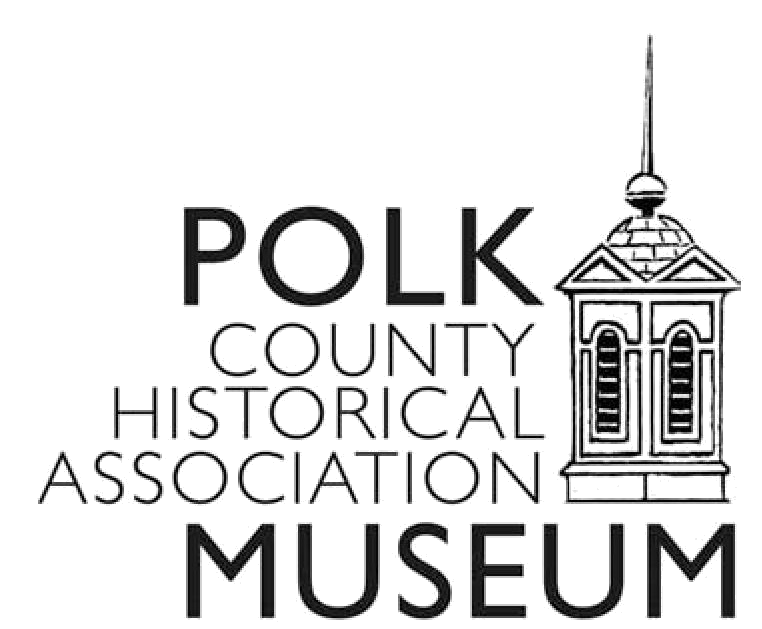The History of Polk County
Polk County in the southwestern corner of North Carolina was settled long before the American Revolutionary War. The early tide of settlement acted as a buffer between Cherokee Indians in the West and the white settlers in the East. Cherokees had occupied the entire Alleghany Mountain area from the Blue Ridge to the Cumberland range, including the western half of Polk. Little evidence is available that they had villages in this territory. However, large numbers of the tribe used the lands as hunting grounds in summer. Hostile feelings on the Cherokees' part toward white settlers were a menace to people living near the foothills.
The North Carolina General Assembly in 1767 advised the English Colonial Governor William Tryon to meet Cherokee chiefs in the hope of setting a boundary line between the frontier of the Province of North Carolina and the Cherokee hunting grounds thus preventing disputes. The survey, resulting from the meeting, was undertaken on June 4, 1767. The treaty line extended from Reedy River to Tryon Mountain.
Until 1840 North Carolina was the notion's principal source for gold and Polk County was well prospected. The "gold rush" brought additional settlers, adding to the numbers already in the area who were establishing forms and plantations.
Across the years Polk County was a part of Bladen, then of Anson, Mecklenburg and Tryon counties. Still later it was part of Rutherford, and finally it was formed from portions of Rutherford and Henderson counties.
Initially counties were formed to hold court for the local inhabitants, to operate a jail, and to build roads. In age North Carolina's 100 counties range from Chowan, Currituck, Posquotank and Perquimans, created in 1670, to Avery and Hoke, created in 191 1. In size the counties range from Chowan with 180 square miles to Sampson, with 962.
The original formation of Polk County took place in 1847 and the area was named in honor of the late Colonel William Polk of American Revolutionary War fame.
Controversy among the population over the location of the county seat resulted in an Act on January 16, 1849 by the General Assembly repealing the Act which had created Polk County in the first place. A supplementary Act, passed a few days after January 16, provided that the lands which had been taken from Rutherford and Henderson counties should be returned to these counties.
Dr. Columbus Mills and Colonel William F. Jones of Cleveland were elected to the General Assembly in 1854 and their combined efforts recreated Polk County under Chapter 10, Public Laws of 1854-1855, ratified by the General Assembly on January 20, 1855. This provided that the county seat "shall be located by J. J. Irvin of Burke, Major Benjamin Burgin of McDowell and John R. Logan of Cleveland, or a majority of them, at the geographical center of the county, or within two miles thereto." A further section of this low provided that the county seat "be named Columbus in honor of Dr. Mills whose efforts had resulted in the reestablishment of the county of Polk."
Polk was scarcely six years old and had just begun to function in the family of North Carolina counties when the Civil War intervened. In the ensuing four years of conflict (1861-1865) her economy, as in other counties in the state, was severely taxed.
At the end of the war her people were in dire straits. Polk County did not recover from paralyzing lethargy following the Civil War until about 1900.
The town of Saluda was incorporated by the General Assembly of 1881. In 1885 the General Assembly incorporated Tryon and Mill Spring as municipalities.
During the administration of Governor Charles Brantley Aycock, 1901-1905, there was an awakening along educational lines. One of Polk County's first major schools, still used today, was the Stearns School in Columbus, made possible by Mr. Frank Stearns who settled in Columbus from Cleveland, Ohio. Mr. Stearns gave land and funds to help build the school which had a major influence on education in the area. Hundreds of children from the mountains went to Stearns School in the days when there was a dearth of school facilities.
Descendants of many of the original families helping to establish and settle Polk County still live here. The names of Gibbs, Laughter, Pace, Arledge, Lankford, Newman, Wilkins, Green, Williams, Fagan, Durham, Bradley, Fisher, Jackson, Nodine, Mills represent the fourth generation of Polk County Pioneers and there are probably many more. Few centurion counties anywhere, of small population, can count today so high a percentage of descendants from its first settler families.



